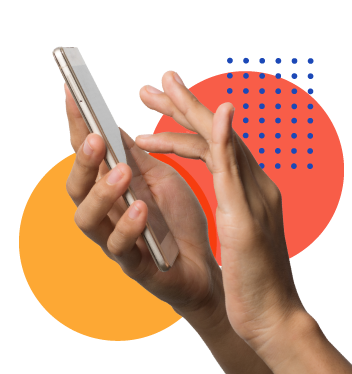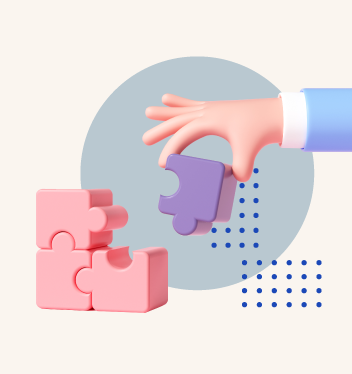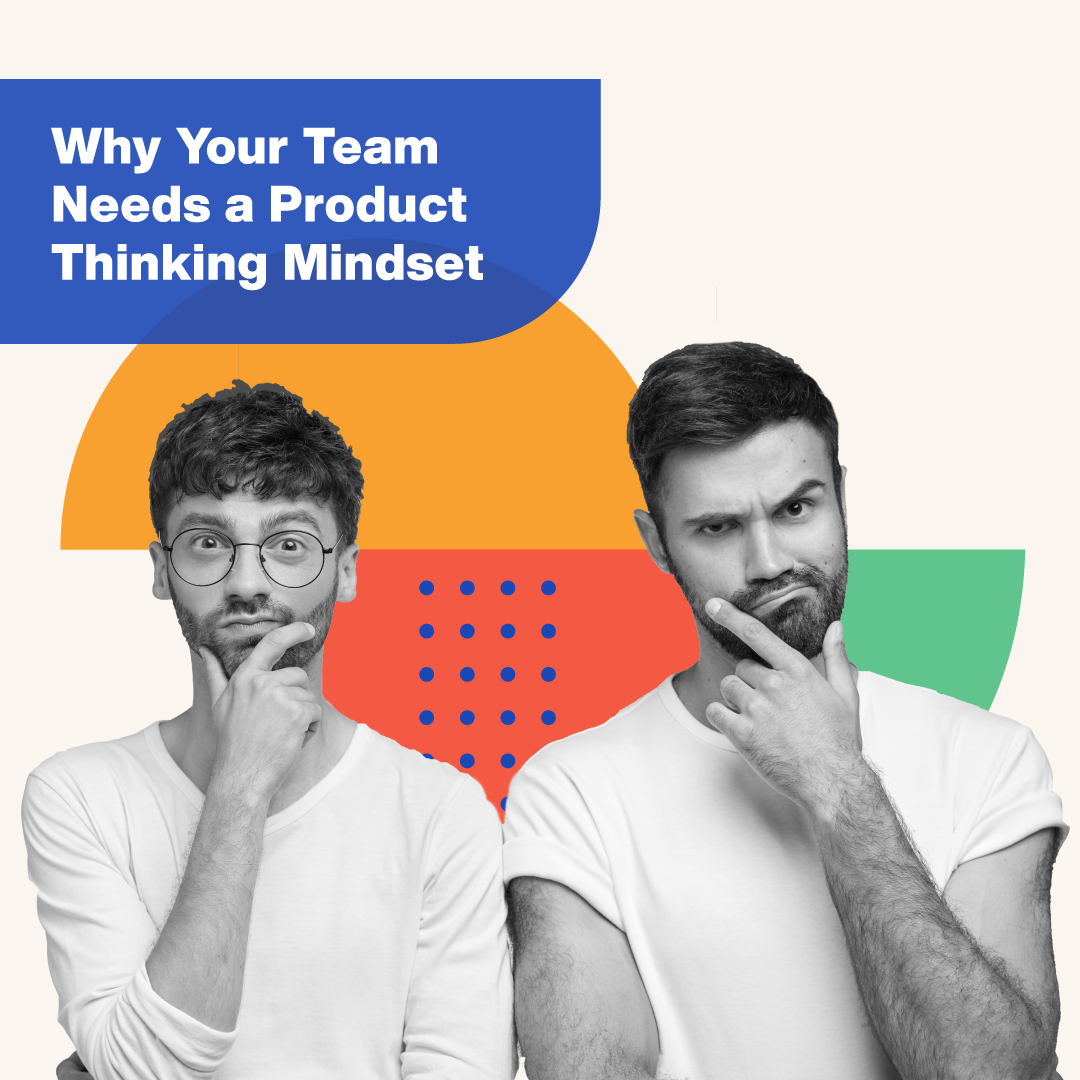UX design continues to develop as a high-demand and exciting field. As the experience and capability of UX designers at all levels grow, having a speciality or concentrated discipline will become increasingly important in the growing jobs market, reflected in the growing number of diverse ads for UX roles.
“UX was barely a discipline outside of web design when I entered the industry! Today UX has become this fundamental, flexible toolset we use to design every kind of human-centric product, service and business.”
Elia Maniscalco, UX Programme Director
As humans spend more and more of their time on websites, platforms, and apps, the need for UI/UX design is predicted to explode. In addition, there are about 30 billion Internet of Things (IoT) devices worldwide, expected to increase to 75 billion by 2025. The very near future looks like it will be a seamless mix of devices ‘talking’ to one another, and we predict the job of the UX designer will be to oversee how this comes together in a way the user loves.
Predicting future trends used to happen within timeframes of 5-10 years. However, as we have all seen during the pandemic, predicting design and the tech future is only realistic within a 2-3 year time span – at most! Current UX trends show some of the direction we’re heading. In our latest article, we’ve covered nine as part of our #futureofwork series.
1. UX will no longer be a ‘nice to have’
“Remember HMV? It was one of the world’s leading music brands, and it’s now almost completely disappeared, replaced by design-centered companies like Spotify and iTunes. What we can see across all industries, accelerated by COVID-19, is an unbelievable amount of disruption taking place, and much of this is down to technology and user experience differentiators.”
Skills Union CEO
In the next ten years, McKinsey believes that 75% of the companies in the S&P 500 will have disappeared, which is a staggering prediction, and potentially true.
Companies without intuitive, excellent digital customer experiences have now been proven to have lower consumer satisfaction and revenue and less repeat business. So today’s companies are starting to see that UX design is a valuable business tool, not a pretty nice-to-have. This is evidenced since Google announced that it would favour websites with good UX in its search rankings.
Moving forward (and this is already happening at scale), successful companies will invest in hiring UX design experts because they know this is integral to the bottom line, not simply company aesthetics. As the oft-quoted finding from Forrester demonstrates, “every $1 invested in UX yields a $2 to $100 return, a return of 9,900%.”
LinkedIn identified UX design as one of the top ten skills of 2020, and in 2021 featured UI designers as one of the top 15 most in-demand professions. We got to know from statistics that in 2020 the median pay for a Web Developer was $77,200 per year and $37.12 per hour. Another survey has found that 84% of product designers had a salary increase in the last 1-2 years. In addition, the industry expects to see a 20% hike in the next 1-2 years.
The global skills shortage and competition for mid-level and senior UX professionals are pushing salaries upwards. For example, the US Bureau of Labour Statistics predicts that jobs for UX designers will grow at 8% — much faster than average. It is also one of the best-paid jobs in the country, with UX designers earning a median salary of $75,000 and 10% of designers earning more than $109,000.
What we don’t yet know is how entry-level designers will break into the industry, as current job specifications exclude up and coming potential.
2. Corresponding Desktop And Mobile Apps
“The companies who set themselves apart will differentiate themselves through their user experience offer, which is much more than just visual design. How and what are you offering the user? How good is your website – can I complete what I’ve set out to do on it? Can I find the thing that I want to buy? Is the payment gateway efficient? So it’s a lot more than just the visual or aesthetic position of a brand.”
Premika Posaw, Head of UX at Govtech.
More and more people have adopted mobile as their primary way to consume information, shop, communicate and explore, all exacerbated by COVID-19. Adaptive UI allows a UI to be dynamically changed based on the user’s needs. Every desktop application now needs a corresponding mobile app, making UI/UX even more critical than today.
Users expect more intelligence when interacting with technology in the current UX landscape. In the future, designers will focus on implementing strategies that allow for the dynamic configuration of a UI based on an individual user’s needs.
3. UI And UX For Hybridized Environments
A hybrid app is one that can be used across many platforms. It’s developed in a single standard programming language (such as C# or a mix of HTML5 and Javascript) and then compiled for each platform. Plugins for that operating system are typically used to handle device-specific interactions.
We’ll be leaning on UI and UX designers differently as we engage with consumers in new ways. Companies have already started operating in hybridized environments (both digital and physical spaces), which will continue to grow, focusing on the retail environment. We’ve already seen this transition occur with restaurants and digital menus.
4. AI tools will help UX designers in new ways

“AI will augment human thinking with its unique intelligence.”
Many of our workflow and workplace systems are already affected by AI, whether we recognize them or not.
As UIgarage so rightly says: “Just because they’re part of your job does not necessarily mean that AI will take over your job – and put you out of a job.”
AI will make some aspects of jobs obsolete, but where one door closes, others will open. For example, AI is likely to free up time for those working in the UX industry to focus on tasks machines can’t do. AI will not take the designer’s job away; instead, AI will likely automate many mundane tasks and help designers focus on more significant problems. Only humans can design a powerful UX and beautiful UI because only we can relate to fellow humans. AI may do very well for algorithms, but only humans can think and design systems that resonate with people’s hearts and minds.
AI will support the increase in work to map out user needs and produce adaptive products and digital experiences. This means the scale of a user interface, OS, and platforms where the experience takes place will expand to a whole new level. We’ll need to think about how a user can move fluidly between devices when designing experiences.
AI will continue to help us get the intelligence we are currently missing because of disparate data sources and biases in user research. In addition, data visualization can help designers and UX researchers better understand the outputs from AI, which helps inform decision-making. Even though AI will take over and simplify some of the design processes, UX designers will have to apply human skills to oversee and link up interaction and experiences.
AI has already been instrumental in making design tools more efficient and productive. For example, Figma has added AI-powered features for distributed teams, making life for remote UX designers easier. AI will also help automate the wireframing and pixel-pushing processes critical to current UX design. Things like figuring out the contrast in buttons and texts will be automated, freeing designers to spend more time on human-centred design relevant to each point in the user journey.
5. Inclusivity in design gets the attention it deserves

The main goal of UX is to include all users and make sure they have a great experience with a product or service. Inclusive design that proactively anticipates and reacts to the needs of people across a diverse spectrum is a promising trend and in line with the social movements and global calls to stop bias and discrimination against groups. From user research to inclusive representation in UI, diversity will go mainstream. Those who don’t adopt this will get brand backlash.
Inclusive design considers many human factors such as race, sociocultural background, gender, age, language, disabilities, and more. Given that 15% of the world’s population lives with some form of disability, inclusive design is not needed for a small group. As more and more organisations focus on diversity & inclusion initiatives and larger cultural conversations continue to spotlight these gaps, designing for inclusivity will become more critical, with the most significant UX change reflected in user research strategies.
6. Increasing focus on human-centred design, user research and behaviour analytics
“UX has become so popular because it has taught us that when we put people at the centre of our projects, we become able to define solutions that speak to the head and the heart of our potential users, buyers and customers.”
Elia Maniscalco, UX Programme Director
Thoughtful user experience design has become significant in building products. In addition, more and more people go online with high expectations and access to public opinion of companies that were not available before. Businesses know people willingly adopt products that are easy to use, quick to respond, and enjoyable to interact with. However, keeping customers engaged with products or services requires a deeper understanding of their intrinsic needs. Knowing what makes them tick is vital, and as the adage has gone, and needs to go: test early, and test often.
In line with this, there will be a change in UX writing and microcopy, part of brand relationship building with consumers. This will become more human-centric, less formal and a crucial part of communicating a company’s tone of voice and personality. Again, this is important to bring a human-centric element to engage people in ways AI and technical interactions cannot.
Brands will introduce human-centred language at multiple customer touchpoints. Accordingly, there will be a jump in UX copywriter roles and demand for people with an authentic, empathetic and clear style of communication that resonates with people.

7. Voice assistants will become the norm
The pandemic has also accelerated the uptake of home-based, voice-controlled devices and changed audio listening patterns on all devices. As a result, around 3.25 billion digital voice assistants are already being used in devices around the world, and forecasts predict that by 2023 this will reach eight billion — a number higher than the world’s population.
27% of online users worldwide use voice search on their mobile devices, and voice assistants are now mainstream among US consumers. Millennials are the heaviest users, but use is rising among all age groups, including children and teens. According to the latest voice search trends, this number is growing. Smartphone evolution (not to mention the rise of IoT devices) will lead to more and more people searching by voice instead of typing. UX designers will need to develop the skills to create compelling visual instructions, confirmations, and animations.
8. AR and VR go mainstream
“In the future, it will become crucial to replicate life and its interactions on a digital level, like some of the recent acclaimed innovations (including the Metaverse), have committed to doing.” – Elia Maniscalco, UX Programme Director

The future will be full of even more VR applications as businesses of all kinds figure out ways the technology can enhance operations. We have seen rapid growth in virtual reality (VR), augmented reality (AR) and mixed reality (MR), all of which will infiltrate life in a new way going forwards. These have already taken on new importance for both brands and consumers after Covid-19. The global market for AR products is predicted to surge up to 85% to $165 billion in the next four years.
The most well-known application of augmented reality – technology that overlays digital information in the real world – was the Pokémon GO craze. However, rather than provide a fully immersive virtual experience, augmented reality enhances the real world with images, text, and other virtual information via devices such as heads-up displays, smartphones, tablets, smart lenses, and AR glasses.
VR is another ‘futuristic’ technology that has struggled to break into mainstream tech – although some of this has been price tag related, which is soon to change. Not convinced? Global luxury brand Gucci has already released a pair of virtual sneakers designed only to be worn and shared online. The ‘digital-only’ trainers, created in collaboration with AR fashion platform Wanna, can be bought via the Gucci app for $17.99. Moving forward, a big chunk of fashion brands’ revenue will come from digital products.
Examples can already be seen on the high street. For example, clothing retailer Asos got on board with AR in 2019, launching an experimental feature called Virtual Catwalk, designed to help app users visualise products. Since then, it has scaled up the use of ‘See My Fit’ technology – which uses augmented reality to’ digitally fit’ clothing onto models. This shows shoppers how products realistically look in different sizes and on different body types, which helps to drive sales and reduce returns. Moving forward, a big chunk of fashion brands’ revenue will come from digital products.
Another interesting, current example that points to the trend of AR going mainstream is IKEA. Ikea’s design lab, Space10, recently revamped Ikea’s AR offering to create a more functional and immersive experience. The all-new Ikea Studio app enables users (using LiDAR sensors in iPhones) to capture entire 3D room plans and re-design them, incorporating everything from windows and door frames to wall colours and rugs.
There are now inexpensive design applications on the market, such as Google ARCore, Adobe Aero and XD (now featuring 3D transforms), which will accelerate the learning curve and adoption of tech and design for immersive augmented experiences.
9. Privacy
For consumers to trust brands with their data, privacy needs to be at the centre of user experience.
Data is now a commodity to be used, traded and sold. It has been estimated that by 2023 (which is right around the corner), there will be 3.5 billion cellular Internet of Things (IoT) connections and that companies will invest $15 Trillion in IoT by 2025. This will generate amounts of personal data challenging to comprehend. As the current concerns of the public show, privacy will be essential. Market research already shows that privacy and security are the top concerns for users.
In the past few years, numerous privacy regulations have come into force to give consumers greater control over their data. Designers will need to figure out how to operate within these mining data models while ensuring consumers’ right to privacy at scale. They will need to make the data opt-out process user-friendly instead of requiring multiple steps and forms to complete, which is an issue today.

New products shape society – think about Deliveroo Airbnb and Tinder, which have had a knock-on effect in creating alternative competitors (think Uber Eats and Bumble). Self-driving buses are being tested in Spain, and the scale at which innovation is being developed is why this new era is called the ‘fourth industrial revolution.’ Of course, it goes without saying UI and UX are instrumental for any new product to be taken up by humans to change how people live their lives.







